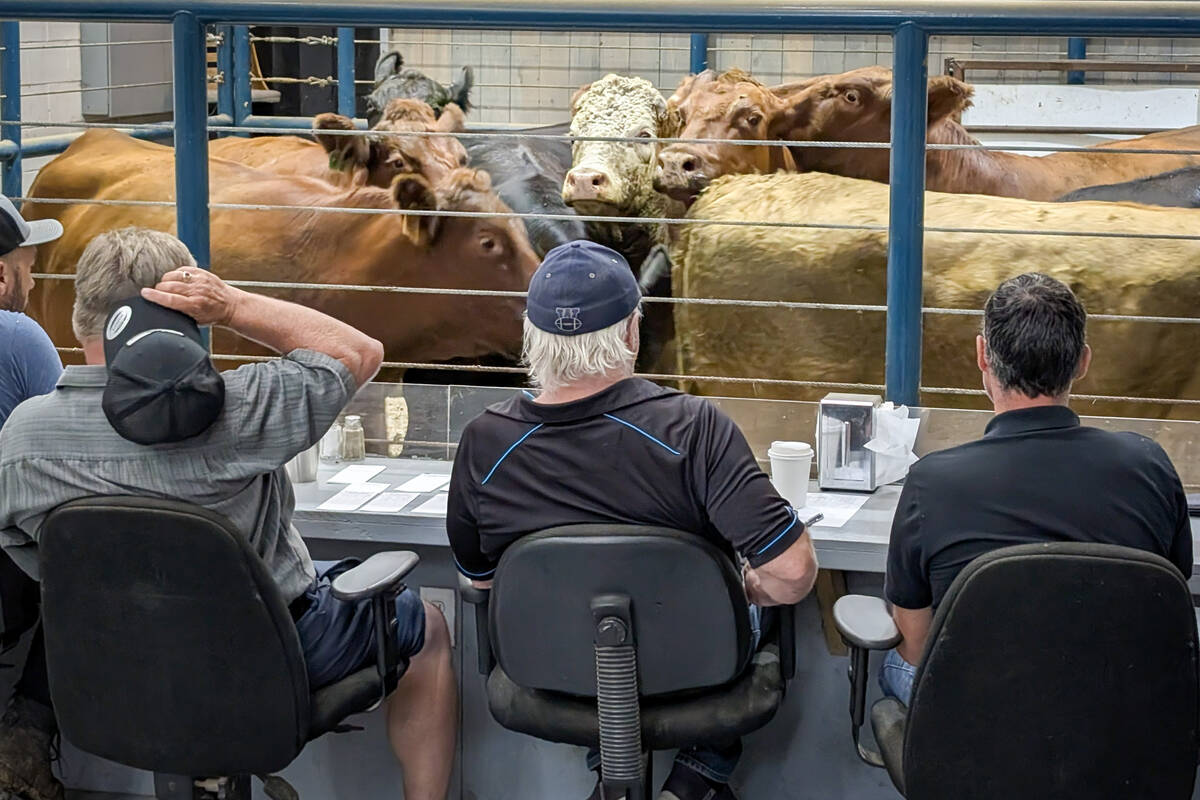WICHITA, Kansas, May 1 (Reuters) – Winter wheat yield prospects in southern and western Kansas are below the five-year average and down 15 percent from a year ago due to drought, with some western fields expected to yield nothing, crop scouts on an annual state tour said Wednesday.
The average yield forecast from 264 fields scouted on the second day of the Wheat Quality Council’s three-day tour was 37.1 bushels per acre. The figure is down from last year’s 43.7 bu. per acre and the tour’s five-year average of 39.5.
The highest yield forecast of the day was 76 bu. per acre and the lowest, reported by scouts on two different routes, was zero.
Read Also

U.S. livestock: Cattle rally, hogs slide
Chicago cattle futures regained a ground on Monday to maintain a fairly level trajectory after last week’s fall.
Kansas is the top U.S. wheat state and the largest producer of hard red winter wheat, which is typically milled into flour for bread.
The tour wraps up Thursday afternoon and will produce a forecast for Kansas.
Another crop tour conducted by consultants, Oklahoma State University extension agents and area agronomists pegged Oklahoma’s crop at 25.45 bushels per acre, down almost 30 percent from the 2012 yield of 36 bu. per acre.
The Oklahoma tour forecast the state’s 2013 wheat production at 85.583 million bu, down from 154.8 million a year ago.
Most of the Kansas crop is behind in maturity. The worst wheat is in the western third of Kansas, where plants in some fields are only seven to 10 centimetres high, versus normal height of about 60 cm. Seeded last autumn, those plants did not have enough moisture to get established, crop scouts said.
The slow pace of crop development makes it harder to forecast yield.
“Abandonment is a wild card. The extent of this freeze damage is a wild card. This crop is still so immature, I think we’ve got to get most of the way through May before we start to get a good grasp on it,” said Dalton Henry, director of governmental affairs with Kansas Wheat.
“We are going to be incredibly dependent on the weather in May and June, and some of that crop may depend on July weather,” said Henry, who is on the tour.
The poorest fields are not likely to be harvested but some farmers will probably leave the wheat in the ground to reduce soil erosion. Kansas has been in the grip of a severe drought.
“Now it’s just a matter of soil preservation. It’s only a matter of time before this part of the country goes airborne,” said Aaron Harries, marketing director of Kansas Wheat, referring to topsoil loss in western Kansas.
A producer in Logan County, in western Kansas, said one of his fields had received just six inches of rain in the last two years. A light rain fell in that county on Wednesday, yet trucks were still kicking up dust on rural dirt roads.
Another producer, Gary Millershaski, said wheat in the area would not be ready to harvest until after the Fourth of July, by which time hot temperatures are likely to have reduced yields.
Crop prospects improved east of Garden City, Kansas, as scouts traveled back toward the center of the state. That area appeared to have received more rain since last autumn than areas farther west, scouts said.
Scouts noted freeze damage in a few irrigated wheat fields that were more mature, and therefore, more vulnerable to the cold than dryland fields.
More than 70 participants are on the three-day tour, which departed on Tuesday from Manhattan, Kansas. It is scheduled to issue its final figures on Thursday afternoon in Kansas City.
OKLAHOMA YIELDS SEEN DOWN 30 PERCENT FROM 2012
Winter wheat in neighboring Oklahoma has also suffered from drought and spring freeze damage, Mike Schulte, executive director of the Oklahoma Wheat Commission, told scouts on the Kansas tour on Wednesday.
An annual crop tour of Oklahoma this week by a group of crop consultants, Oklahoma State University extension agents and area agronomists projected the 2013 Oklahoma wheat yield at 25.45 bushels per acre, Schulte said, down almost 30 percent from the state’s final 2012 yield of 36.0.
The Oklahoma tour forecast the state’s 2013 wheat production at 85.583 million bushels, down from 154.8 million a year ago.
Schulte said the Oklahoma Panhandle was on track to produce “the worst wheat in the last 15 years,” adding that several freeze events this spring caused extensive crop damage there.














